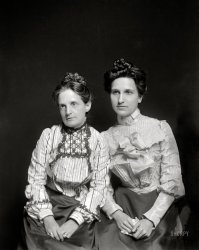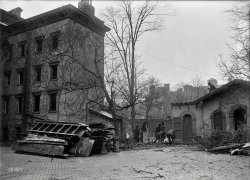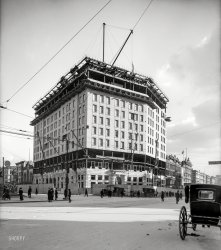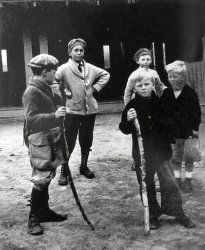
MAY CONTAIN NUTS

Search Shorpy
SHORPY ART

Framed or unframed, desk size to sofa size, printed by us in Arizona and Alabama since 2007. Explore now.
Join and Share
Ad-Free Shorpy
Shorpy is funded by you. Patreon contributors get an ad-free experience.
Learn more.

Recent comments
- Baldwin 62303
- Baldwin VO-1000
- Cold
- No expense spared
- Tough Guys
- Lost in Toyland
- And without gloves
- If I were a blindfolded time traveler
- Smoke Consumer Also Cooks
- Oh that stove!
- Possibly still there?
- What?!?
- $100 Reward
- Freeze Frame
- Texas Flyer wanted
- Just a Year Too Soon
- WWII -- Replacing men with women at the railroad crossing.
- Yes, Icing
- You kids drive me nuts!
- NOT An Easy Job
- I wonder
- Just add window boxes
- Icing Platform?
- Indiana Harbor Belt abides
- Freezing haze
- Corrections (for those who care)
- C&NW at Nelson
- Fallen Flags
- A dangerous job made worse
- Water Stop
Member Photos
The Shorpy
Print Emporium
Print Emporium
Search Shorpy
Search results -- 30 results per page
- $900 Million: 1914
- 1914. "Treasury Department, Office of Comptroller of Currency -- bond vault. Contains bonds to the value of ... Indirect Costs of the Great World War" 2d ed. [Washington 1920] by Ernest L. Bogart.) So the $900 million represented here covered the ... Posted by Dave - 01/06/2012 - 7:10am -
![$900 Million: 1914 1914. "Treasury Department, Office of Comptroller of Currency -- bond vault. Contains bonds to the value of $900 million securing government deposits and postal savings fund." National Photo Co. glass negative. View full size.
Smoke BreakLooks like he's reaching for the fan switch before they light up.
Then and Now$900 mil would be +/- $20,360,700,000 in 2011 according to the inflation calculators.
US Postal Savings, existed from January 1, 1911 until July 1, 1967. It was still big in Europe the last time I looked. This system was set up by the US Government to act as a saving account for anyone too poor to have a saving account or lived too far from a bank.
Two weeks worth of warThe direct cost of U.S. involvement in WWI was roughly $23 billion, from the U.S. declaration of war in April 1917 until the end of the war in June 1918. (Source: "Direct and Indirect Costs of the Great World War" 2d ed. [Washington 1920] by Ernest L. Bogart.) So the $900 million represented here covered the cost of two weeks of the looming "war to end all wars."
Glass ceilingWhat's going on with the top of the glass plate? At the top, it appears there's part of another picture, and the I-beams and everything else are abruptly cut off.
[It's the very top portion of another shot taken at the Treasury Department at the same time. At some point in the past, prints were copied to glass negatives and these two happened to be stacked unevenly atop one another.]
Postal SavingsFrom what I've been told about my coal miner grandfather, he used the postal savings exclusively. He distrusted banks, saying that (back then) there were any number of counters for making deposits, but only one for withdrawals. According to him, they even knocked a hole in the wall so you could put your money in at night.
(The Gallery, D.C., Natl Photo)](https://www.shorpy.com/files/images/31485u.thumbnail.jpg)
- Crosswise: 1902
- ... C. at 600 Pennsylvania Avenue Southeast (now a commercial office building).
Chalmers was born in Hawley, Massachusetts in 1827. His ... his best-known work. He died in Washington in January 1920 at the age of 93. The photo of him below was taken from Mary Longley’s ... Posted by Dave - 10/18/2019 - 7:33pm -

- Fifteenth and H: 1923
- ... The Woodward Building in Washington circa 1923. The former office building, put up in 1911, became apartments in 2005. National Photo Co. View full size.
I wonder... ...if people in the 1920's lived happier lives overall than people do today. Look at that picture. ... Posted by Dave - 08/05/2012 - 10:56am -
![Fifteenth and H: 1923 The Woodward Building in Washington circa 1923. The former office building, put up in 1911, became apartments in 2005. National Photo Co. View full size.
I wonder......if people in the 1920's lived happier lives overall than people do today. Look at that picture. The streets seem clean and pleasant. I bet that area is a mess now.
[It's not. - Dave]
A win for preservationists Washington Post, Mar 9, 1990
Court Bars Demolition of Woodward Building
Preservationists Hail Curb on "Special Merit"
Preservationists hailed a major victory yesterday when the D.C. Court of Appeals stopped plans to tear down a turn-of-the-century office building in the Fifteenth Street Financial Historic District.
The decision, the first to use the city's historic preservation law to overturn a demolition order issued by the mayor, placed new limits on the city's power to find that the "special merit" of a development justifies destruction of a historic site.
"Virtually every historic building will now have to pass a tougher standard in order to be torn down. It will effect every single historic building," said Cornish F. Hitchcock, who represented the Committee of 100 of the Federal City, a private planning body that argued for yesterday's decision.
The stakes in the case were grander than its subject; The Woodward Building, a U-shaped beaux arts structure at 1426 H. S. NW. ....
(The Gallery, Cars, Trucks, Buses, D.C., Natl Photo)](https://www.shorpy.com/files/images/32261u.thumbnail.jpg)
- Special Services: 1944
- ... West 23rd Street." Photo by Howard Hollem et al. for the Office of War Information. View full size.
Oh, no This picture is ... "Chelsea Shul") has been at 236 West 23rd Street since the 1920's. Problem is, it occupies a structure originally built as a Methodist ... Posted by Dave - 06/06/2014 - 10:38am -
![Special Services: 1944 A D-Day triptych. "New York, New York. June 6, 1944. Congregation Emunath Israel. D-Day services in a synagogue on West 23rd Street." Photo by Howard Hollem et al. for the Office of War Information. View full size.
Oh, noThis picture is going to drive me nuts. Emunath Israel (today usually called the "Chelsea Shul") has been at 236 West 23rd Street since the 1920's. Problem is, it occupies a structure originally built as a Methodist church that looks absolutely nothing like what we can see in this picture. It has much plainer stonework, and that's not the sort of thing that would be changed in even a massive renovation.
[It is the same building - formerly a Presbyterian, not Methodist church, - massively renovated. -tterrace]
Emunath IsraelSure looks different nowadays. The photo below is from Thanksgiving 2010. The Hebrew over the door in the recent picture says Emunath Israel: faith of Israel. The two tablets are the ten commandments. The Hebrew in the old picture is Talmud Torah: learning of Torah. The synagogue is immediately to the west of the Chelsea Hotel.
How do you have a sign ready for that?I don't understand how you already have a sign like that painted and ready for the event? Was it common knowledge that there was going to be "a" D-Day and people just didn't know when it was going to happen? Or did they commission this sign and get it painted within a few hours for use that day?
(Panoramas, Howard Hollem, NYC, WW2)](https://www.shorpy.com/files/images/8d36262a-triptych.thumbnail.jpg)
- St. John's: 1900
- ... Congress has given them a date range of "between 1918 and 1920," though they all seem to be from around 1900. Anyone out there from the ... much needed in that part of the city, where bland office buildings have unfortunately taken root.
Locomobility The car is ... Posted by Dave - 09/04/2012 - 2:45pm -
![St. John's: 1900 "St. John's Church, 16th & H streets N.W." From a series of dozens of National Photo glass negatives showing various Washington landmarks. The Library of Congress has given them a date range of "between 1918 and 1920," though they all seem to be from around 1900. Anyone out there from the LOC? View full size.
Zero horsepower.That carriage has no horse!
[A "horseless carriage"? It'll never catch on. - Dave]
Church of the PresidentsThis charming church is right across the square from the White House, and every US President since 1816 has attended there at least once.
http://www.stjohns-dc.org/article.php?id=48
View Larger Map
NeighborhoodI used to work right around the corner, and had to walk to a court off Lafayette Square frequently. It was always a pleasure to see St. John's facade and steeple along the way. It's a building with character, much needed in that part of the city, where bland office buildings have unfortunately taken root.
LocomobilityThe car is a 1900 Locomobile steamer.
(The Gallery, Cars, Trucks, Buses, D.C., Natl Photo)](https://www.shorpy.com/files/images/00080u.thumbnail.jpg)
- Corcoran House: 1922
- ... behind where this stood in the 1600 block of I St NW. The 1920's saw the movement from residential to business usage in this area just north of the White House. When the Old Executive Office building was the War Department, many of the residents where military ... Posted by Dave - 03/18/2016 - 3:02pm -

- What Goes Up: 1907
- ... addition completed in 1910, came back down in 1920 at the tender age of 13, demolished to make way for an office tower. 8x10 inch glass negative, Detroit Publishing Company. View full ... Posted by Dave - 03/31/2017 - 12:20pm -

- Back Alley Confab: 1914
- ... Republic near Chino, Calif., when he was 16 years old in 1920. But he went on to become a respected Los Angeles newspaperman and war correspondent for the Office of War Information. Thornton became a test pilot and Charles Lindbergh's ... Posted by SierraMadrean - 02/07/2014 - 7:56pm -
























